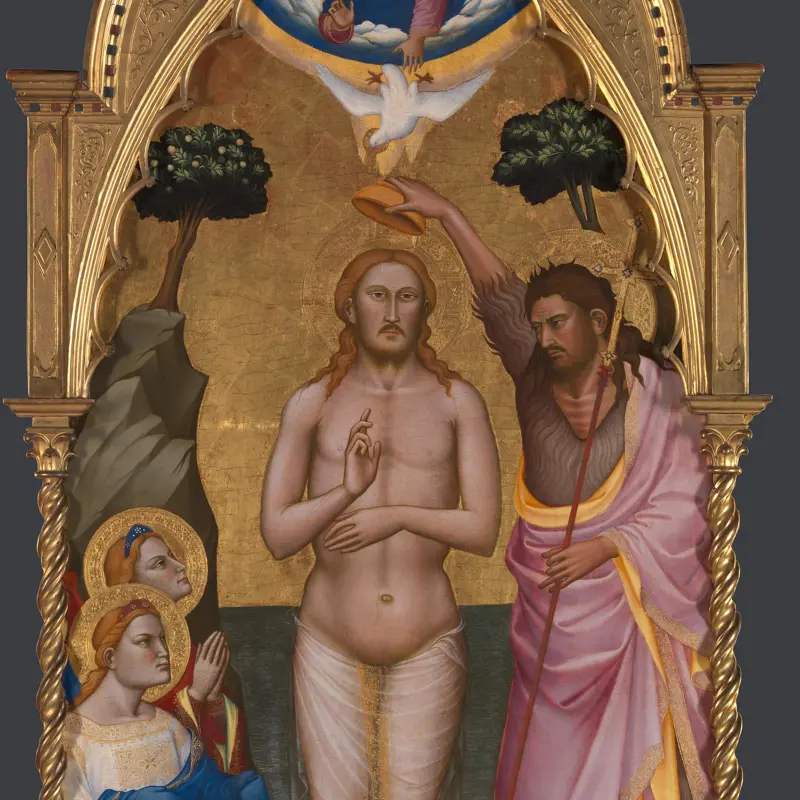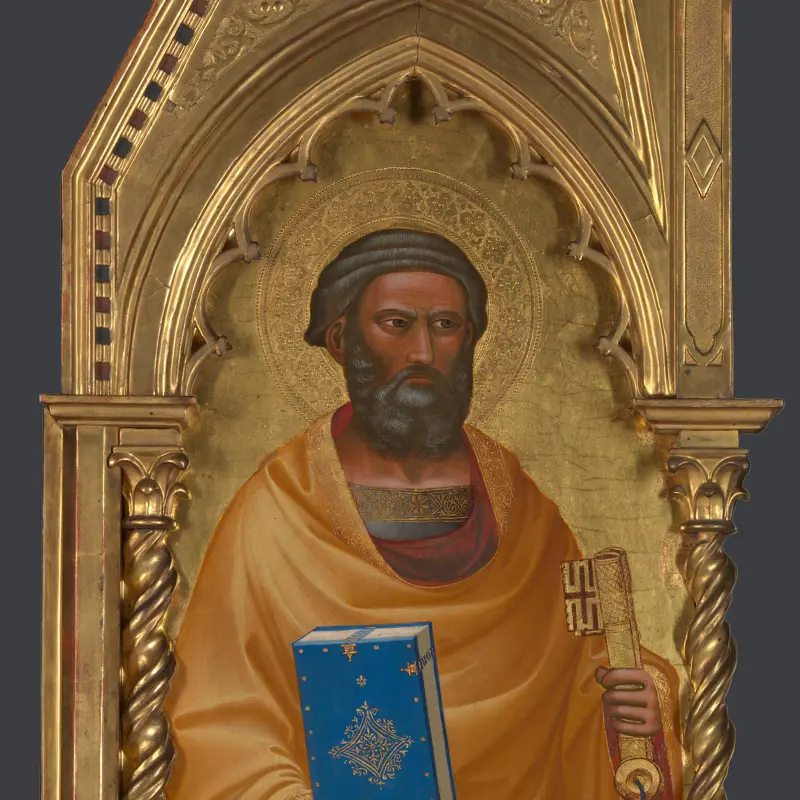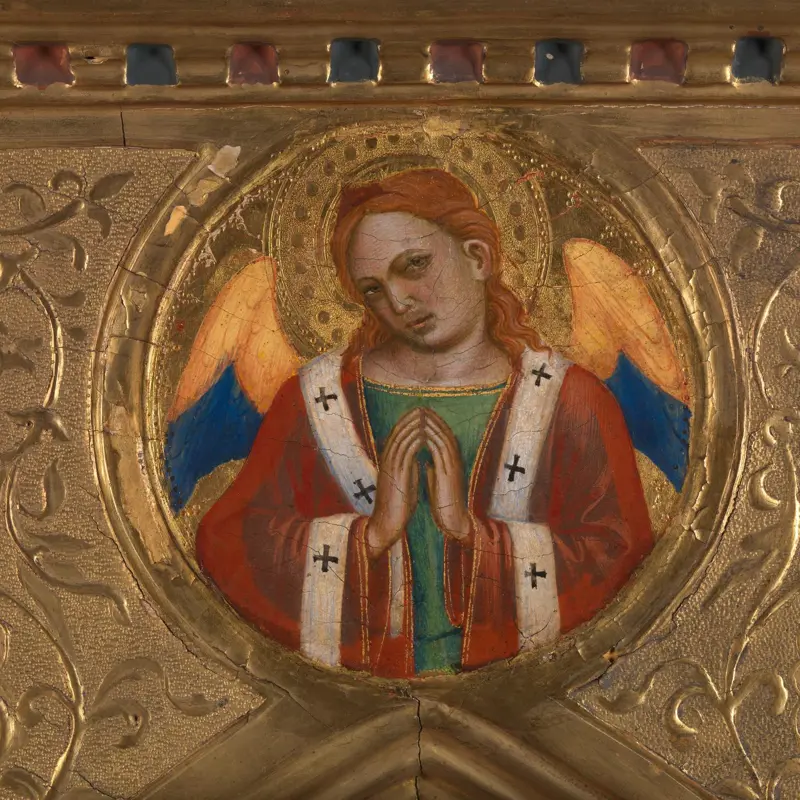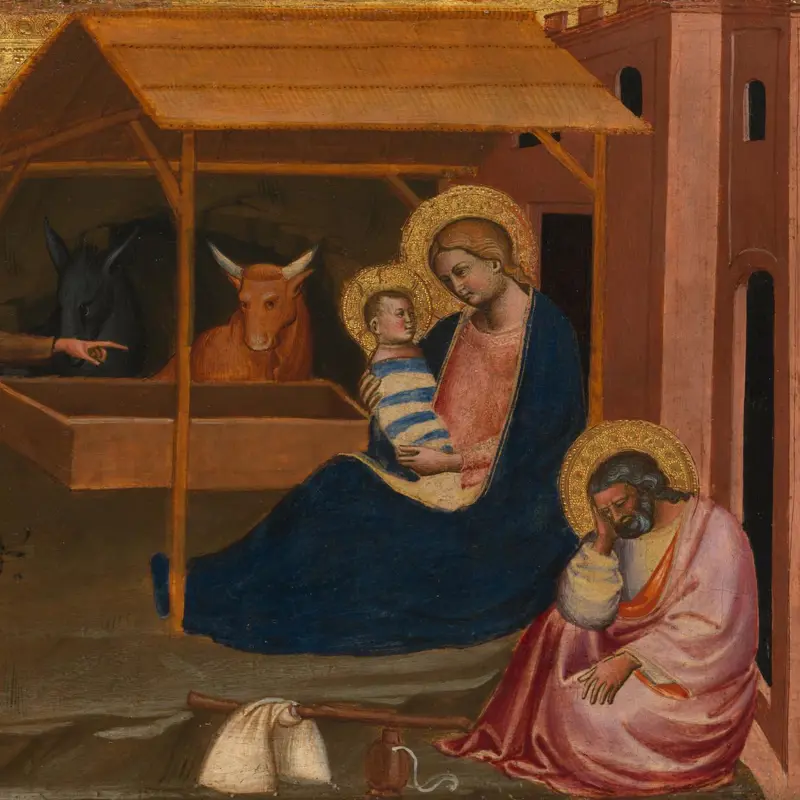Niccolò di Pietro Gerini, 'Baptism Altarpiece', 1387
About the group
Overview
This altarpiece is the earliest known example that shows the baptism of Christ as the central image – in large multi-panelled altarpieces it was usually the Virgin and Child.
It was made for a chapel in Santa Maria degli Angeli, the Camaldolese monastery in Florence. The chapel was dedicated to the feast commemorating Saint John the Baptist’s death, but the central panel depicts the key moment in his life: when he baptised Christ in the river Jordan.
The inscription tells us that it was commissioned by one of the monastery’s monks, Don Filippo Nerone Stoldi, in memory of his mother. The monastery contained many altarpieces commissioned by Florentine families, which served as memorials. One of the monks’ duties was to say prayers for the souls of the dead on days specified by the families.
Key facts
Details
- Full title
- Baptism Altarpiece
- Artist
- Niccolò di Pietro Gerini
- Artist dates
- Documented 1368; died probably 1415, certainly by 1427
- Date made
- 1387
- Inventory number
- NG579
- Collection
- Main Collection
About this record
If you know more about this work or have spotted an error, please contact us. Please note that exhibition histories are listed from 2009 onwards. Bibliographies may not be complete; more comprehensive information is available in the National Gallery Library.
Works in the group
-
It is rare to see images of the baptism of Christ at the centre of altarpieces and this is quite possibly the first example where it takes this position in Italian painting.Christ stands in the centre of the river Jordan, naked but for a transparent loin cloth. He gazes directly at us, making a b...Not on display
-
This is Saint Peter, recognisable by the colour of his robes – he is traditionally shown wearing yellow and blue – and by the large golden key he holds. It is the key to the kingdom of heaven, which was promised to him by Christ (Matthew 16: 19).The saint’s bare feet express his simplicity and hu...Not on display
-
This is the right-hand panel of the main tier of an altarpiece showing the baptism of Christ. Saint Paul is shown holding a large sword, which appears black because the silver leaf used for the blade has darkened over time.The saint has bare feet, expressing his simplicity and humility, but he st...Not on display
-
This roundel (round panel) comes from the frame of the central panel of a multi-panelled altarpiece with an image of the baptism of Christ at the centre. It shows an angel, fingertips touched together gently in prayer.This is the only surviving frame decoration from the altarpiece but there may h...Not on display
-
This is the lowest part (the predella) of an altarpiece that depicts Saint John the Baptist in its central panel, baptising Christ in the river Jordan. At either end of the predella are two standing saints: Saint Benedict on the left and Saint Romuald on the right.The scene on the left shows the...Not on display






